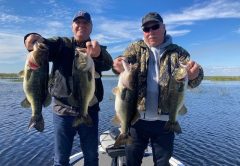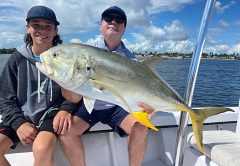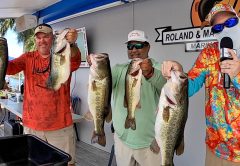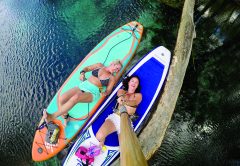FWC LAKE RESTORATION
MARCH 9 & 11, 2015 – The Florida Fish and Wildlife Conservation Commission (FWC) has applied for a series of permits from the Army Corps of Engineers Jacksonville Division to conduct restoration activities on 95 lakes and waterways through-out the State of Florida. These permits are required pursuant to Section 404 of the Clean Water Act and Section 10 of the Rivers and Harbors Act of 1899.
The FWC is seeking permits which would authorize all of its routine mechanical aquatic plant maintenance activities related to habitat restoration and navigation maintenance within the specified water bodies for a period of 15-years.
The proposed restoration activities would improve habitat for fish and wildlife and provide outdoor opportunities for boating, angling, and wildlife viewing.
The Corps permitting process requires the opportunity for public comment. On March 9, 2015, the Corps published a Public Notice for the proposed work of FWC’s Southwest Region on their website. To view the Public Notice reference file number SAJ-2014-02266. For comments, follow the link as noted in the Public Notice.
Similarly on March 11, 2015, the Public Notice for the South Region was posted on the same website. Use file number SAJ- 2014-00641 to view the notice and to locate the link for public comment with respect to this region.
Waterways covered under the Southwest Region include:
- Kissimmee River in Okeechobee Glades, Highlands, Polk,and Osceola counties
- Lake Arbuckle, Lake Hancock, Lake Isabell, Lake Livingston, Lake Marion, Lake Pierce, Lake Weohyakapka, Mud Lake, and Tiger lake in Polk County
- Lake Adelaide, Lake Istokpoga, Lake Josephine, Lake Sebring, Litter Red Water Lake, Red Beach Lake, and Wolf Lake in Highlands County
- Lake Lindsey in Hernando County
- Lake Manatee in Manatee County
- Lake Seminole in Pinellas County
- Middle Lake in Pasco County
- Lower Myakka Lake and Upper Lake Myakka in Sarasota County.
Waterways covered under the South Region include:
- Lake Okeechobee in Glased, Hendry, Okeechobee, Martin, and Palm Beach Counties
- Lake Traffor in Collier County
- Lake Hicpochee in Glades County
- Lake Osborne in Palm Beach County
As with voting in general elections, your voice does matter. Ref: Gary Morse & Liz Barraco
SFWMD APPROVES MASSIVE PUMP STATION TO HELP PROTECT ST. LUCIE RIVER
MARCH 12, 2015 – West Palm Beach, FL — With construction progressing on a 6,300-acre wetland to clean water headed for the St. Lucie River and Estuary, the South Florida Water Management District (SFWMD) today approved a contract to build the massive pump station needed to move water into its connected water storage reservoir. “One after another, the District has approved construction contracts in recent months for the major components of the C-44 Reservoir and Stormwater Treatment Area,” said SFWMD Governing Board Member Kevin Powers, whose area includes Martin County. “This is the kind of progress needed to complete the project and begin operations to improve water quality for the St. Lucie River and Estuary.” With four remotely operated electric pumps, the 21,000-square-foot, three-story station will be able to deliver 1,100 cubic feet (about 8,228 gallons) per second from the C-44 Canal into the new reservoir. Capable of storing about 16 billion gallons of water, the 3,400-acre reservoir will feed the Stormwater Treatment Area (STA), which will include 32 miles of berms, 30 miles of canals and 56 concrete water control structures. Inside the berms, plants such as cattails, pickerel weed and bulrush will remove and store nutrients, including phosphorus, from the water before it flows into the river and estuary. Work on the $40 million pump station (S-401) by Harry Pepper & Associates, Inc., the lowest responsive and responsible bidder, is scheduled to be complete in September 2018. Project Progress: To date, several milestones have been achieved on the C-44 project, including:
- In July 2014, the SFWMD Governing Board approved a major agreement with the U.S. Army Corps of Engineers — which was originally constructing all components of the project — allowing the SFWMD to expedite construction of the STAs, a pump station and a portion of the project discharge canal.
- In August 2104, the Board awarded an approximately $5.4 million contract for construction of the spillway that will serve as the single point of water movement out of the entire project.
- Strategically completing the spillway early in the construction timeline will allow the SFWMD to store additional water on the project, helping to reduce excess water flow to the estuary—even before the reservoir and stormwater treatment area are complete. This work will allow water managers to retain local runoff on approximately 7,000 acres of the 12,000-acre project site.
- In September 2014, the Board invested approximately $101 million in a contract to construct the STA portion of the project.
The St. Lucie River and Estuary is part of the larger Indian River Lagoon system, the most diverse estuarine environment in North America. It is home to more than 4,000 plant and animal species, including manatees, oysters, dolphins, sea turtles and seahorses.
HIGHLAND HAMMOCK STATE PARK CLEANUP
April 11 2015 – Volunteers are needed to help remove old debris at Highlands Hammock State Park. You’ll be removing old dumped appliances and other debris from a section of Highlands Hammocks State Park that is rarely seen. Your efforts cleaning up this scrub oak habitat will help to restore it to its natural beauty. Pre-registration through April 11th.
Contact Bill Parken • 863-699-3742 • 3908 Dunn Ave • Sebring, FL 33875
PLEDGE TO PITCH IT: DON’T LITTER WITH SOFT PLASTICS CLEANUP
MARCH 12, 2015 – Alexandria, VA –Americans are more conscious than ever about properly disposing of, or recycling plastic containers and other materials. The recreational fishing industry, through KeepAmericaFishing®, its grassroots angler advocacy campaign, is asking anglers to add their worn out soft plastic baits to that list.
The new Pitch It campaign was the direct result of a proposed legislative ban in Maine on the sale and use of soft plastic baits. While legislators were contending that baits discarded in our waterways were harming fish populations, the American Sportfishing Association (ASA) is not aware of any study done in the wild showing the detrimental impact of soft baits. Years of laboratory tests on soft baits have shown that most fish regurgitate or pass them without harm.
While there are many environmental factors that have an impact on lakes and streams, ASA contends that, regarding soft plastic baits, what really exists is a litter problem. As the voice for the recreational fishing industry, ASA and KeepAmericaFishing developed the Pitch It campaign to address this issue, educate anglers on proper disposal methods, and influence a positive change.
“THE GENESIS OF THE PITCH IT CAMPAIGN WAS THE POTENTIAL LEGISLATIVE BAN ON SOFT PLASTIC BAITS, AND THAT IS ITS CURRENT FOCUS,” SAID KEEP AMERICA FISHING DIRECTOR LIZ OGILVIE. “HOWEVER, WE WOULD LIKE TO EXTEND THE CAMPAIGN BEYOND SOFT PLASTIC BAITS TO ADDRESS TRASH OF ANY TYPE LITTERING OUR NATION’S WATERWAYS.”
“Our industry has stepped up to take the initiative to tackle this problem head-on and demonstrate that recreational anglers are – as always – the best stewards of our nation’s waterways,” stressed Ogilvie. “In fact, there is a lot of support from the industry on this issue, but special thanks go to the World Fishing Network, Strike Kingand angling pro Kevin VanDam who were all significant contributors to getting the campaign off the ground.”
In his January 15, blog post, Pitch It supporter Kevin VanDam said, “There’s no excuse for throwing anything in the water that isn’t going to break down immediately. A crusty sandwich is one thing, but old plastics, fishing line or any tackle should be carried to shore at the end of the day. I encourage you to share this information with other fishermen and convince them to keep damaged plastics in their boats until they get to land where it can be disposed of properly. We have to lead by example.”
The Pitch It microsite on www.KeepAmericaFishing.org not only serves as an educational tool, but it also aims to be a repository for recycling programs across the country. “We are hearing about local tackle shops, clubs and even individuals who have started recycling programs for their local area. It’s important that we list them in one place, so anglers can easily find a repository for their disposable tackle,” noted Ogilvie. “Perhaps people will discover an opportunity right around the corner that they never knew about.”
For more information, contact info@keepamericafishing.org or visit the Pitch It microsite at http://www.pledgetopitchit.org/.
[easy-social-share]







